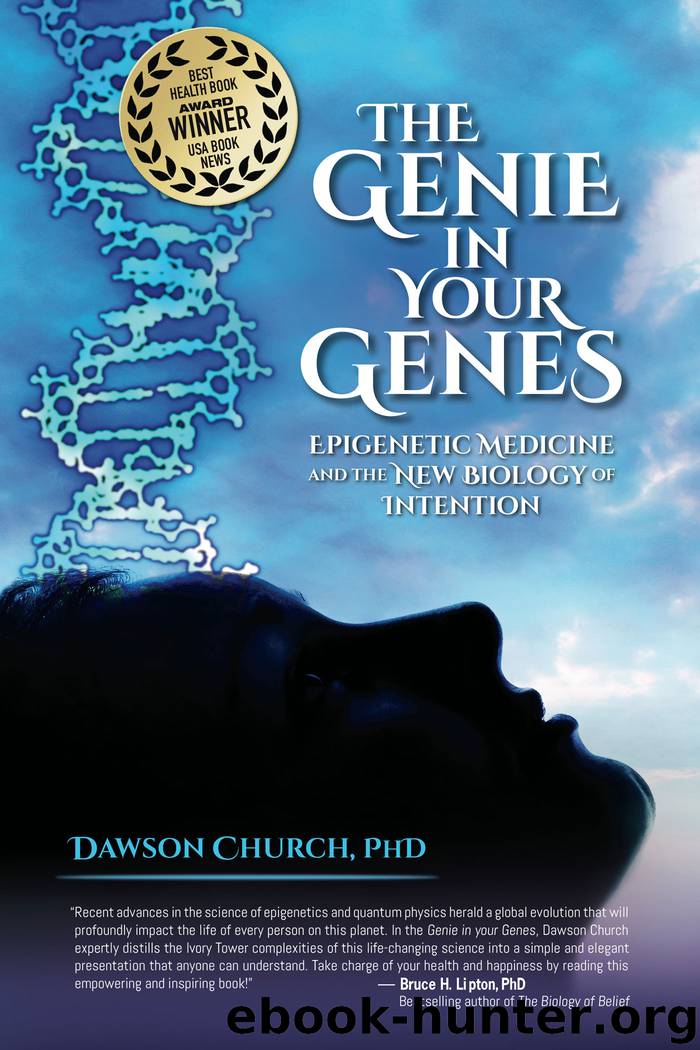Genie in Your Genes by Dawson Church

Author:Dawson Church
Language: eng
Format: epub
Publisher: Hay House
Published: 2018-12-16T16:00:00+00:00
Doctors Often See Miracles
According to the results of the survey, two-thirds of doctors now believe that prayer is important in medicine. Miracles occur today, according to three-quarters of the group. Among physicians in every religious group in the study, except for less religiously observant Jews, more than 50% of participants believe that miracles occur today. Certain groups of doctors (among them Christians of all denominations and Orthodox Jews) believed to a very high degree (80% or more) that miracles happen today.
Two-thirds said that they encouraged their patients to pray, either because they believed it was psychologically beneficial to the patient or because they believed that God might answer those prayers, or both. Half of them said that they encouraged their patients to have other people pray for them. Half of them said that they prayed for their patients as a whole, and nearly 60% said that they prayed for individual patients. An average of 55% of the physicians reported seeing miraculous recoveries in patients, and a third or more of physicians (of every religious group) said they had seen miraculous recoveries—even when the percentage of doctors in that group who prayed for patients was well below one-third.4 Between 50% and 80% of physicians—even those of weak religious faith—believe that miracles can happen today. There’s good reason for their conviction; a recent meta-analysis of prayer studies found that “prayer offered on behalf of others yields positive results.”5 And to the surprise of researchers who believed that college students become increasingly secularized as they progress through school, a large-scale survey found the opposite. Though church attendance diminished, with college students being less likely to attend church than high school students, their spiritual focus, and concern for the intangible aspects of human existence, increased at the same time.6
Unlike linear medicine, miracles, prayer, and spirituality all embrace the idea of sudden and dramatic improvement in health. Miraculous cures are hard to study, since they cannot be predicted using the methods by which clinical trials are run. In their book Catastrophe Theory, Alexander Woodcock and Monte Davis note, “The mathematics underlying three hundred years of science, though powerful and successful, have encouraged a one-sided view of change. These mathematical principles are ideally suited to analyze—because they were created to analyze—smooth, continuous quantitative change: the smoothly curving paths of planets around the sun, the continuously varying pressure of a gas as it is heated and cooled, the quantitative increase of a hormone level in the bloodstream. But there is another kind of change, too, change that is less suited to mathematical analysis: the abrupt bursting of a bubble, the discontinuous transition from ice at its melting point to water at its freezing point, the qualitative shift in our minds when we ‘get’ a pun or a play on words.”7 Randomized clinical trails cannot study discontinuous and exceptional phenomena like miracles. We have to rely on the accounts of doctors who’ve seen them, and patients who’ve experienced them.
Download
This site does not store any files on its server. We only index and link to content provided by other sites. Please contact the content providers to delete copyright contents if any and email us, we'll remove relevant links or contents immediately.
The Hacking of the American Mind by Robert H. Lustig(4270)
Right Here, Right Now by Georgia Beers(4064)
Fingerprints of the Gods by Graham Hancock(3906)
Goodbye Paradise(3672)
Bad Pharma by Ben Goldacre(3213)
Happiness by Matthieu Ricard(2965)
More Language of Letting Go: 366 New Daily Meditations by Melody Beattie(2945)
The Social Psychology of Inequality by Unknown(2906)
Drugs Unlimited by Mike Power(2522)
The Plant Paradox by Dr. Steven R. Gundry M.D(2518)
Confessions of a Shopaholic by Sophie Kinsella(2214)
Borders by unknow(2150)
Dry by Augusten Burroughs(2021)
Make Love Not Porn by Cindy Gallop(2014)
Stop Being Mean to Yourself: A Story About Finding the True Meaning of Self-Love by Melody Beattie(1922)
Getting Off by Erica Garza(1872)
Belonging by Unknown(1778)
Yoga and the Twelve-Step Path by Kyczy Hawk(1765)
Unmasking Male Depression by Archibald D. Hart(1747)
